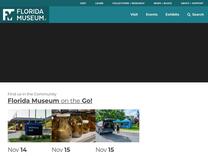Agricola Road Site – Florida Vertebrate Fossils https://www.floridamuseum.ufl.edu/florida-vertebrate-fossils/sites/agricola-road-site/
Agricola Road Site University of Florida Vertebrate Fossil Locality PO047 Location The site was located about 3.5 miles (5.6 km) east of Bradley, Polk County, Florida, in the Hookers Prairie Mine. It gets its name due to its proximity to Agricola Road. It was exposed by commercial phosphate minin
M., D. M. Alba, J. Fortuny, S. De Esteban-Trivigno, C. Rotgers, J. Balaguer, R.

